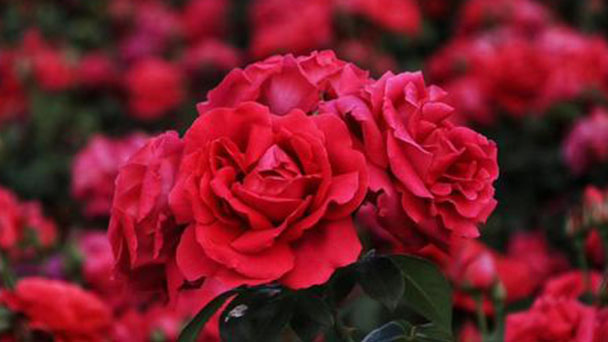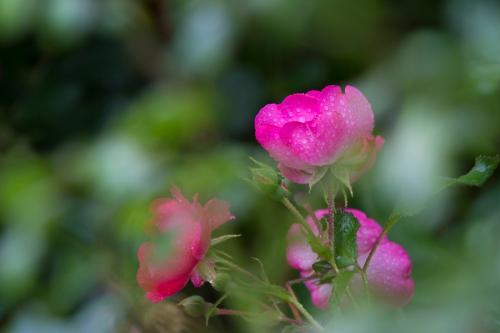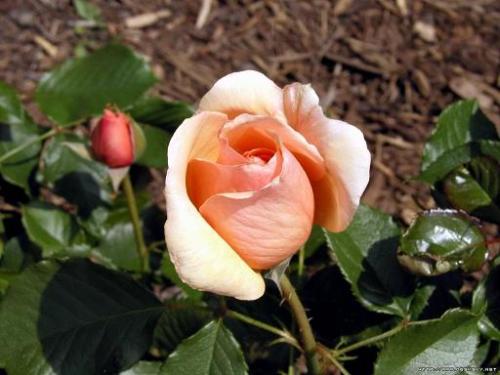How to grow and care for rose
Written by Maggie
Jan 11 2021

I believe that everyone is familiar with roses. The gorgeous color and beautiful petal shape are gifts that every girl can't refuse. Roses are easy to grow. They can be planted in the ground or pot. So how do roses grow? How to care for roses? Please read with me with questions!

Rose growing methods
The best growing time: Spring and autumn can be carried out, autumn is good.
Best growing soil: Well drained, loose fertile loam or light loam, and in clay loam growth is poor, poor flowering.
Growth humidity requirements: Roses are sun-loving, cold and drought-tolerant plants, moist air is helpful for their growth.
Optimum growth temperature: Suitable growth temperature of 12 ~ 28℃, and can withstand -20℃ low temperature.
Optimal growth illumination: No matter the ground is planted, potted all should put the place with sufficient sunshine, and should accept the direct sunlight of 4 hours or above every day. It cannot be placed for a long time in a place with insufficient indoor light. In winter, put it under the sun.
Rose hydroponics growing method
1. Generally use no bottom hole, inside and outside the double layer network sieve set of pots for special water planting pots; To the average family, the appliance that has certain transparency is all appropriate. The planting season is from mid April to mid - to late June and from late September to early November. During this period, the temperature is suitable, the life activity of the rose is vigorous, planting, and water are easy to take root.
2. Choose roses with good-looking plant shape and strong growth, and rinse off the mud or other media at the roots with water. Plants with weak growth potential have few nutrients and slow physiological activities. Root-washing hydroponics will affect their hair roots and growth, so they should not be selected. For some flower species suitable for hydroponics, it is also possible to cut fully developed semi-mature branches in their vegetative growth period and put them in water to take root. Succulent and pulpy plants, stems have tender water storage tissue, branches cut from the mother should not be inserted directly into water, but should be placed in a cool and dry place for 2 ~ 3 days, until the wound is fully dry before water insertion.
Rose care
Fertilizing care
When the plant grows to about 25cm, start to press the branches. Press the branches at noon on sunny days, otherwise it is easy to break. After transplanting, it generally need 5 years, so fertilization should be more, heavy, generally organic fertilizer 60t/hm2, diammonium phosphate 750kg/hm2, calcium superphosphate 2250kg/hm2, organic fertilizer to be fully compostable.
Watering care
Watering topdressing should be carried out according to the soil conditions, climatic conditions and the growth state of the branches and leaves. In the growing of roses, if the soil moisture is insufficient, it will cause the plant leaves to fall off. When the surface is dry, it should be watered in time to keep the ground moist.

Pruning care
Rose pruning time is after flowering. It is best to lower some, but to determine according to the bud and tree potential, the tree potential is weak from strong bud cut, in order to promote strong branches. The tree potential is more prosperous from weak bud cut, in order to make the tree potential balance, as for the messy branches after flowers to be cleaned up. The trees are balanced and bloom evenly. In addition, new rose plants often appear from the ground near the old plant. It is better to cut off another plant in the next year, for the benefit of both plants.
Replacement of soil in basin
Turn over the soil deeply before planting, and disinfect the soil with the bitter, so that the soil and fertilizer are completely mixed. Do bed width 12cm, groove width 40cm, bed length 5.5 ~ 6.0m. The soil should not be too fine, too fine gas is poor, resulting in slow seedling, late growth is slow.
Propagation points
The seeds are harvested in autumn into a plastic bag filled with wet sand soil, placed in the night frozen daymelt environment, after a month or so and then gradually warmed to about 20℃. Seed germination after the split can be planted (or sand storage to the second year of spring sowing). Plant it when the seedlings grow out of 3 ~ 5 leaflets.
Disease and insect control
Powdery mildew: When infected, the leaves appear convex, convex color becomes light with white powder, the leaves form uneven gradually curling, the spread of germs, the whole leaf back covered with a layer of gray white mold, serious, bud, pedicel, the whole branch, leaves covered with a layer of mold, new buds, leaves are curling. Prevention method: Spray regularly, use nitrile mycozol 600 times liquid, chlorothalonil 800 times and other agents to control. Spray medicine once every 7 ~ 10 days, and often spray on the leaves can effectively reduce the occurrence of powdery mildew. Cut off the infected branches as soon as possible to reduce the chance of retransmission.

Latest Updated
- Benefits of Bugleweed - 7 Science-backed Health Benefits
- Bugleweed Dangers & Side Effects - Is It Poisonous?
- How to Plant Evergreen Trees - What You Should Know
- When to Plant Evergreens - Grow Guide for Evergreen Trees
- 12 Wonderful Evergreen Shrubs for Your Garden
- 12 Popular Evergreen Plants with Pictures for Beginners
- When And How To Prune A Lilac Bush Like a Pro
- How to Grow & Care for Lilac Vine (Hardenbergia Violacea)
- Japanese Lilac Tree (Syringa Reticulata) Care & Propagation Guide
- Shumard Oak Pros and Cons - What to Know
Popular Articles
- Winter maintenance of Antirrhinum Majus
- How to Grow Terminalia Mantaly Tree
- How to Grow and Care for Crossostephium Chinense
- How to grow Antirrhinum Majus in spring
- Peristeria Elata (Dove Orchid) Profile: Info & Care Guide
- Underwatered Snake Plant (Sansevieria Trifasciata) - Signs And How To Fix
- How to Care for Brazilian Jasmine Plant (Mandevilla Sanderi)
- How to Grow & Care for Graptopetalum Purple Delight in Summer
- Rosa Chinensis (China Rose): Plant Growing & Care Tips
- How to Care for Baby Sun Rose (Aptenia Cordifolia)